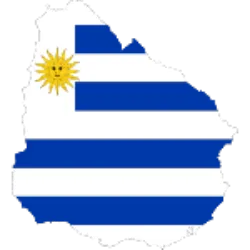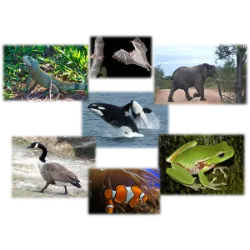Brazilian Pantanal

The Pantanal is the largest open plain in the world, covering an area of about 150,000 km², mostly in Brazil, but also extending to Bolivia and Paraguai. Its main characteristic is the alternation between dry and dry periods, which creates a unique and diversified ecosystem. During the rainy season, large areas of the Pantanal become flooded, forming vast lakes and rivers that are essential for maintaining the region's biodiversity.
This plain is one of the planet's two most important biodiversity hotspots, sheltering a great variety of flora and fauna. The Pantanal is home to more than 1,000 species of plants, 400 species of birds, 300 species of fish and 100 species of mammals. Among those who live in the region, many are on the verge of extinction, such as onça-pintada, jacaré-do-pantanal and deer-do-pantanal. Migratory birds, such as the great white heron and the tuiuiú (symbol of the Pantanal), are also common and attract ecotourists from all over the world.
In addition to its biological wealth, the Pantanal plays a crucial role in regulating climate and water quality, helping to absorb carbon and maintain water resources. Its preservation is essential for the environmental sustainability of South America.
Carnivorous plants
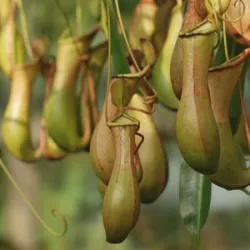
Carnivorous plants are fascinating and unique, adapted to capture and digest animals, mainly insects, to complement their nutrition. They generally grow on their own poor in nutrients, especially nitrogen, and therefore develop this ability to obtain the elements that we cannot access through the roots. There are several species, and each has a different method to capture its prey.
A jug plant, for example, has a structure in the shape of a jug or flake, which contains a non-fused digestive fluid. Sua borda is escorregadia, or what looks like the insects fall into liquid form, where they are only digested. Já a dioneia (ou "killer hitter"), possui folhas that are quickly dated to the detection of the movement of a prey, imprisoning it inside its armadilhas. The saracenia uses sheets with large tubes that attract the insects with their nectar twelve, but they run them inside the plant, where they are digested.
These plants not only capture and digest prey, but also have specialized enzymes that break down the tissues of the prey to extract essential proteins, vitamins and minerals. This adaptation is a notable example of how nature can evolve and create complex solutions to environmental challenges. Carnivorous plants are one of the two most fascinating mysteries of biodiversity.
Test yourself with one of these challenges 👇
You can still go deeper with those who are experts in the subject: Mais Ciências
Discover some interesting facts about Biodiversity
The giant sequoias are the most imposing and ancient trees on the planet
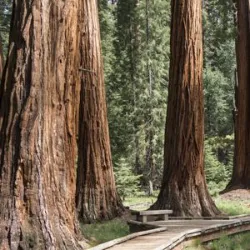
The giant sequoias are the most imposing and ancient trees on the planet. They belong to the species Sequoiadendron giganteum and are known for their colossal size. We can reach heights greater than 90 meters and trunk diameters of 8 meters, making the largest trees in the volume of wood. The most famous, called "General Sherman", located in Sequoia National Park, in California, is considered the largest tree in the world in terms of volume, with about 1,200 cubic meters of wood.
What makes these trees even more impressive is their longevity. Giant sequoias can live for more than 3,000 years, which means that some of them will experience major transformations on the planet over millennia. This extraordinary life span is made possible by its incredible resistance to damage, fire and parasite attacks.
In addition to their grandeur, sequoias play a vital role in the ecosystem, providing shelter and food for various species of fauna and helping to absorb carbon, and contributing to the mitigation of climate changes. Their size, longevity and ecological importance make the giant sequoias a true natural treasure of the Earth.
Insects in abundance
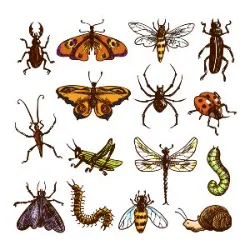
The insects are now, for a long time, the most diverse animals on the planet, with more than a thousand species cataloged and estimated, suggesting that the real number may exceed 10 thousand. They represent approximately 80% of all known animal species, which means that for each human being, there are hundreds of thousands of insects all over the world. Its diversity is impressive, from small forms and flies to colorful bubbles and majestic dragonflies.
The reason for this diversity is due to various factors, including the exceptional adaptation of insects to all of Earth's environments, from tropical forests to the most arid deserts. Also, its ability to evolve quickly, its small size and its short life cycles favor abundant multiplication.
Insects play essential roles in the ecosystem, as pollinators, decomposers and even as a food source for many other species. Let us be fools, life on Earth as we know it would be deeply affected. However, many insects are still poorly studied, and continuous research is crucial to better understand their functions and importance in the maintenance of global biodiversity.
The Interconnection of Ecosystems
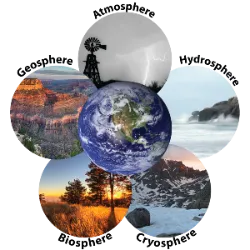
Biosphere – Set of Earth's ecosystems.
Ecosystems – System formed by the community and its physical-chemical environment, including all relationships between living beings and between these and the environment.
Community – Set of different populations, in interaction with each other, that occupy a given geographic area.
Population – Set of individuals of the same species that live in a given place and for a given period of time.
Individual – Living being of a given species, with characteristics similar to the other individuals in the population, capable of interbreeding with other individuals and producing fertile offspring.
Relationships between Individuals and Ecosystem

In nature, a wolf is an individual and cannot live in isolation. It must establish relationships with other individuals of its species, for hunting and reproduction, for example, by forming part of a wolf population. This population interacts with populations of other species, for example when they fight over territory or feed on prey, such as rabbits or deer. All these populations interacting with each other form a community. The set of communities in a given geographical area, interacting with each other and with their physical and chemical environment, constitute an ecosystem. Finally, all of the planet's ecosystems form the biosphere.
Multicellular beings
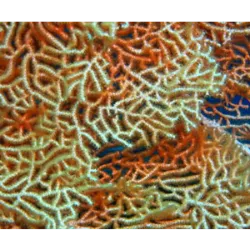
In multicellular organisms , cells have developed specialized tasks and are grouped together in tissues. This is the case of cardiac muscle tissue, which is responsible for the contraction of the heart. Tissues, in turn, are organized into organs. The heart, formed by different tissues, is an organ. Different organs, which work in a coordinated manner towards the same objective, constitute an organ system. The heart is part of the circulatory system. Finally, different organ systems are organized into an organism. A mammal, such as a wolf, is an organism.
Test yourself with one of these challenges 👇
HOME






